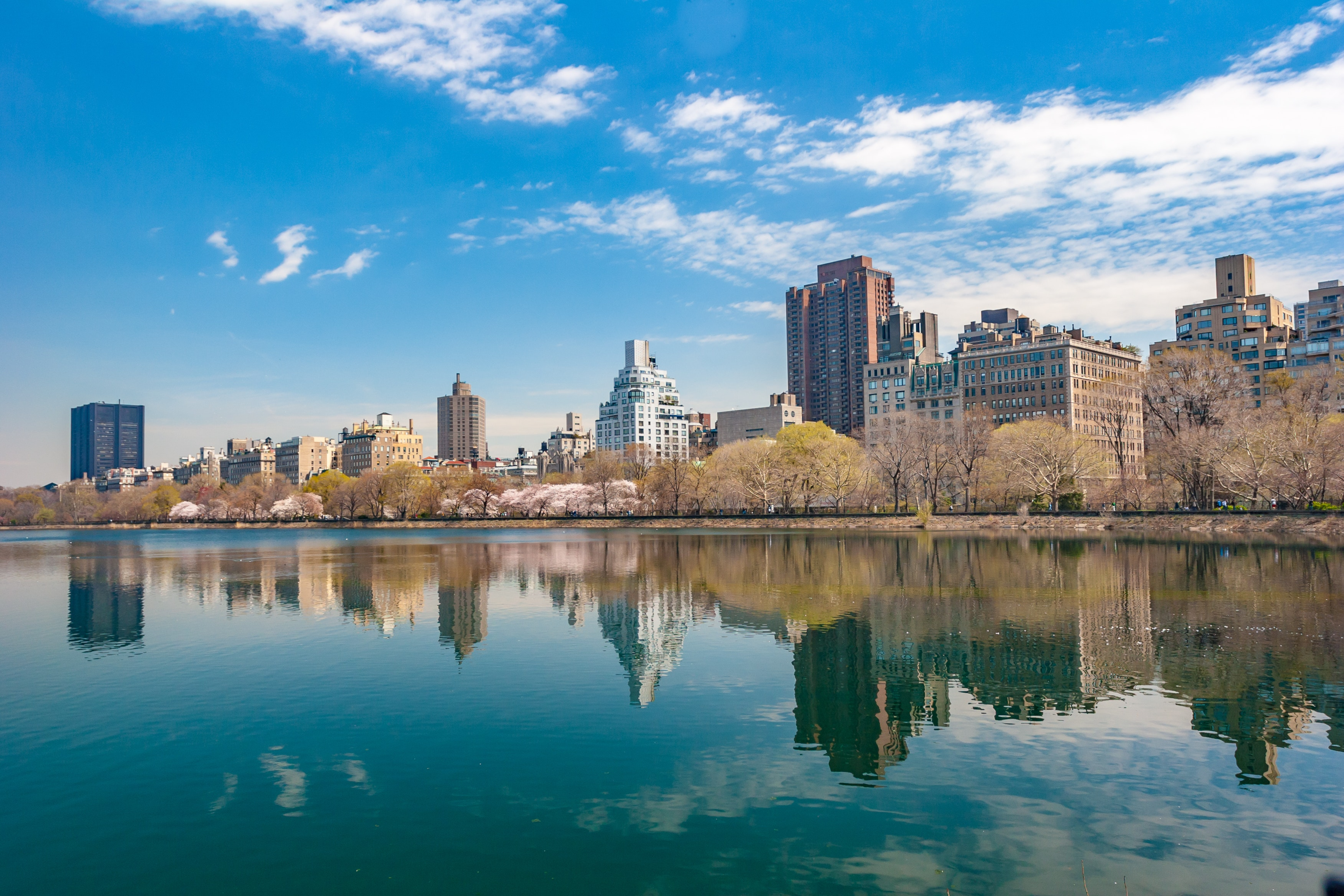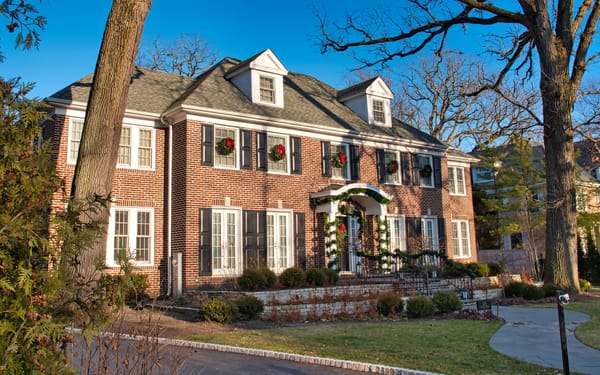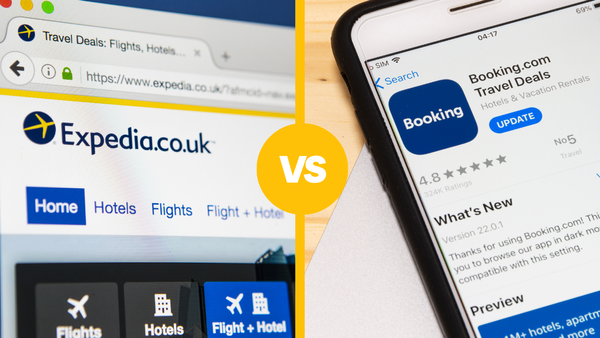Taking Your Share of the Big Apple’s Rental Market: Tips for Hosting an Airbnb in New York

Frank Sinatra famously sang that if you can make it in New York, you can make it anywhere. New York is fiercely competitive. This also applies to its short-term rental industry and running an Airbnb in New York comes with its unique set of challenges.
That being said, New York is one of the most popular tourist attractions. In 2022, more or less 55 million tourists visited the city. What’s more, in 2023 that number is expected to exceed 60 million.
To help you get your slice of the (Big Apple) pie, here are tips and best practices to keep in mind when you’re starting and running an Airbnb in New York. You’ll find that the laws will probably be your biggest obstacle, but if you’re willing to tweak your strategy and widen your target audience, you can make it work.

6 Tips and Best Practices for Operating Airbnbs in NYC
-
Study the local laws
Home sharing in this beautiful city is a contentious issue. Compared to other US cities, the rules regarding short-term rentals are more challenging to understand. Plus, the regulations are also quite strict.
Here are some main guidelines to keep in mind.
In order to be able to host your listing on Airbnb (and other short-term rental platforms like Booking.com, Vrbo, etc.), you need to give your consent to them so that they may share your listing and hosting data with the city. This applies to all aspiring hosts in NYC, unless you have one of following types of listings:
- A class B listing (such as a licensed hotel)
- A private room that can accommodate a maximum of two guests
- A shared room that can accommodate a maximum of two guests
If you plan on renting out your property for no more than four nights per quarter, you’ll also be exempted from this rule. That being said, if the type of listing changes or you plan to rent out your property for five nights or more per quarter, you’ll have to agree to data sharing.
In the event that you don’t want to consent to this type of personal data being shared, you won’t be allowed to host guests for stays shorter than 30 days. However, stays of 30 nights or longer will still be allowed.
This brings us to the next very important rule — the New York State Multiple Dwelling Law. Even if you consent to data sharing, your only option will very likely be to stick to 30+-day stays. According to this law, renting out a class A multiple dwelling for periods shorter than 30 days without the host being present is prohibited.
In short, a class A multiple dwelling refers to a multiple dwelling that’s occupied for permanent residential purposes and includes the following property types:
- Flat houses
- Bachelor apartments
- Studio apartments
- Duplex apartments
- Kitchenette apartments
Basically, it’s all other types of multiple dwellings that aren’t classified as class B.
On the topic of rules, please keep in mind that this blog post is by no means exhaustive when it comes to describing the laws and regulations of New York City. As such, it’s always best to reach out to a lawyer or tax professional familiar with both the city and the industry for more advice. In fact, this is good practice irrespective of where you plan to buy a vacation rental property.
-
Get your HOA on board
If you own a lovely apartment that you want to rent out, you’ll also need to consider your homeowners association (HOA). In addition to studying the city’s own local laws and regulations, you’ll also need to keep in mind HOA rules.
-
Consider long-term stays
As mentioned earlier, opting to host only stays of 30 days or longer is a good alternative to explore if you’re strongly opposed to the idea of your data getting shared. However, even if you don’t necessarily have an issue with data privacy, long-term stays can be an approach to consider. It might just be your only option.
One of the most obvious benefits of a long-term renting strategy is that it can minimize guest turnover. This means that there will be less paperwork. You’ll also most likely find that the day-to-day management requires less work, freeing up valuable time that you can focus on other aspects of running a vacation rental business.
Not only will you save more time, but it can also work out cheaper. For example, you’ll have to pay less for marketing and you’ll probably have fewer cleaning expenses.
Another less obvious advantage is that it can also help you to attract new types of travelers. For example, with the increase in remote work, you’ll be able to attract a new type of business traveler — the digital nomad.
In order to make your Airbnb in NYC suitable for long-term renting, here are a few highly recommended amenities and features:
- High-speed WiFi
- A dedicated workspace, including a comfortable office chair (these two are key if you want to attract business travelers specifically)
- A fully equipped kitchen
- Easy access
- Laundry facilities
- A flat-screen TV
- Air conditioning
- A private bedroom
- A private bathroom
-
Offer discounts
Not only will the New York State Multiple Dwelling Law probably impact the duration of the stays, but also your pricing strategy. When guests book a longer stay, they typically expect to be offered a discount.
The good news is that offering a special price can play to your advantage. According to Airbnb, hosts that offer a weekly or monthly discount generally attract more bookings. What’s more, if you include a monthly discount, your listing becomes searchable to guests specifically searching for listings that welcome stays of longer than 28 nights.
To step up a discount on Airbnb, here’s what you need to do:
- Go to Listings and choose the specific listing for which you want to set up a discount
- Select Pricing
- Select Discounts and add your discount
- Click/tap on Save
-
Share a list of recommendations
Airbnb rentals offer great value in most instances. Add to that the fact that guests can also look forward to a more personalized experience and its popularity comes as no surprise.
Guests who choose to stay in a short-term rental, whether that’s a house with two bedrooms in a quiet residential area or a shared apartment in downtown Manhattan, do so because they crave a more authentic interaction. One way that you can make their stay more personal and authentic is by sharing some of your favorite attractions and restaurants.
In addition to including your best-kept secrets, also ensure to include the other popular activities in New York City like:
- A picnic in Central Park
- A visit to the Empire State Building
- A tour of Downtown Brooklyn
- A trip to the Natural History Museum
- The ferry to Ellis Island
Also, if you’ll be offering your place for longer stays, write your welcome book with that in mind. Guests booking for a month or longer will more often prepare meals at your place to save money and will appreciate directions to your go-to store for groceries. They’ll also need instructions for household tasks like how trash disposal works.
-
Be available
While response times matter irrespective of where your property is located, it matters even more if your Airbnb is in New York. After all, it’s the city that never sleeps, right?
Though, unlike the city, you’ll need your sleep. To ensure that you get a good night’s sleep too, be sure to communicate to your guests when they can contact you regarding normal questions. In the event that there’s an emergency and they need to reach you as soon as possible, be sure to include a number that they should contact.
If you’re operating in New York, you’ll probably be staying on site or renting out your place on a long-term basis. If you will be sharing the apartment or house, it can be a good idea to dedicate a section in your welcome book about interactions.
If it’s a longer stay and your guests will have the property all to themselves, know that they will probably need your support throughout their stay. So, make sure that you remain reachable for the duration of their stay. In this case, it can also be a good idea to check in with them from time to time.

What Are Popular Amenities for New York Vacation Rentals?
In addition to the amenities and features required for a comfortable long-term stay, Airbnb also suggests that hosts include the following two amenities if they plan to list a property in NYC.
-
Self check-in
Travelers have become a lot more familiar and comfortable with contactless services. One way that hosts can embrace this trend when running their short-term rental business is by allowing guests to check themselves in. It’s convenient and can save both parties time.
In short, with this option, you’ll allow guests access to your property via an electronic keypad, a smart lock, or a key lockbox. This means that they’ll need only a code.
Alternatively, you can also use a key exchange service like Keycafe or KeyNest. This way, guests can collect the key at a specific location.
However, the common trend nowadays is to prefer keyless entry over the use of keys. While using a lockbox or key exchange service allows for a seamless check-in experience, the use of physical keys can pose a security risk. Not only can guests misplace it, but there’s also the possibility that a previous guest might have made a copy of the keys without your knowledge.
On the other hand, when you use a smart lock, you can easily change the code remotely after each checkout. Also, it lets you keep track of when cleaners entered the property.
Whichever approach you decide to take, for self-check-in to work as seamlessly as it can, you’ll need to share clearly written instructions. You can also record a short video to avoid any confusion. With the help of vacation rental software, like iGMS, you can easily create a template that you simply edit quickly before each new guest check-in.
-
Pet-friendly accommodation
Considering that this specific rental market is more geared towards longer stays, there’s a real need for travelers to be able to bring their pets along. As a matter of fact, pet-friendly, short-term rentals are also on the increase in various other markets.
In addition to being able to reach a wider audience, here are a couple of other perks that pet-friendly listings can look forward to:
- You can charge more per night. Pet owners are usually willing to pay more if they’re able to bring their pet along on their journey. After all, to them, they’re like an extra family member.
- It’s a unique selling proposition that can help to set your listing apart from other similar properties in your neighborhood. In a competitive market like NYC, this is critical.
If you’re worried about the extra mess and potential property damage, you can always choose to charge a pet cleaning fee along with a refundable security deposit. According to our research, the average pet cleaning fee is about $120, while the average refundable deposit is in the region of $200. Combine that with the fact that pet owners are willing to pay about $23 per night extra and welcoming pets suddenly becomes a lucrative proposition.
Once again, it’s critical that you keep other rules in mind. If you’re, for instance, renting out a one-bedroom apartment, first check in with your HOA.
4 Examples of the Best Airbnbs in NYC
For some real-life inspiration, here are four top-rated vacation rentals in New York:
In walking distance from the ever-popular Time Square and some of the city’s best restaurants, this listing boasts a great location. The exposed brick walls add a warm touch, while amenities like air conditioning ensures the place remains cool.
This listing also proves that it’s not all about space. Travelers planning a trip to the Big Apple are willing to settle for a small space in exchange for privacy and location. Plus, if space allows it and you can add a queen bed, you can accommodate up to two guests.
If you’re interested in offering a more guesthouse-like experience, you can check what this listing in the heart of Brooklyn has done. While it doesn’t offer a private bathroom, the huge windows, hardwood floors, and proximity to the subway station make up for that.
The private bedroom is small, but the host ensures that the rest of the experience is as convenient as possible by offering self-check-in. Also, small gestures, like the ability to drop off your luggage before check-in or collect it after checkout, makes a huge difference.
For some inspo on how you can furnish an entire rental unit, you can check out this two-bedroom listing, which accommodates up to three guests and only three blocks away from Central Park, that’s usually fully booked. To ensure a good night’s sleep, the beds are fitted with the highest quality linen. It also includes a desk, writing area, and fast Wi-Fi to appeal to business travelers.
As no trip to the city that never sleeps should be all work and no play, it includes a huge TV. Though, guests will most likely spend more time enjoying the view offered by the huge windows.
If you’re blessed with space, here are some ideas of how you can create a spacious kitchen and incorporate a dining area. Not only is it spacious, but it also offers beautiful views of the Empire State Building and the East River. The exposed bricks and lush, green indoor plants work well together to create a welcoming, yet clean, look.
Wrapping Things Up
In conclusion, while New York City is a popular tourist destination, running an Airbnb business in the city comes with its unique challenges. The laws and regulations regarding short-term rentals are strict and complex. However, with a well-planned strategy, it is possible to operate a profitable Airbnb business in the city.
It is crucial for hosts to study the local laws, understand their HOA’s rules, and consider long-term stays as an option. Offering amenities such as high-speed WiFi, a dedicated workspace, and a fully equipped kitchen can help attract guests looking for long-term stays. Additionally, offering discounts to guests who book for longer durations can also be an effective pricing strategy.
While the laws may be difficult to navigate, hosts can still succeed in running a successful Airbnb in the Big Apple.
iGMS‘ software can help you run your short-term rental unit by automating a number of day-to-day tasks. Some of these include:
- Managing multiple accounts and listings on the top OTAs from a single interface.
- Synchronizing reservations across multiple platforms to eliminate double bookings.
- Using the unified inbox to organize your messages into a single feed to ensure prompt replies.
- Using automated templates and triggered messaging to improve communication.
- Automating the process of guest review send-outs.
- Task creation and team management with access control.
- Managing direct bookings using a direct booking management toolkit.
- Securely processing payments via integration with Stripe.






